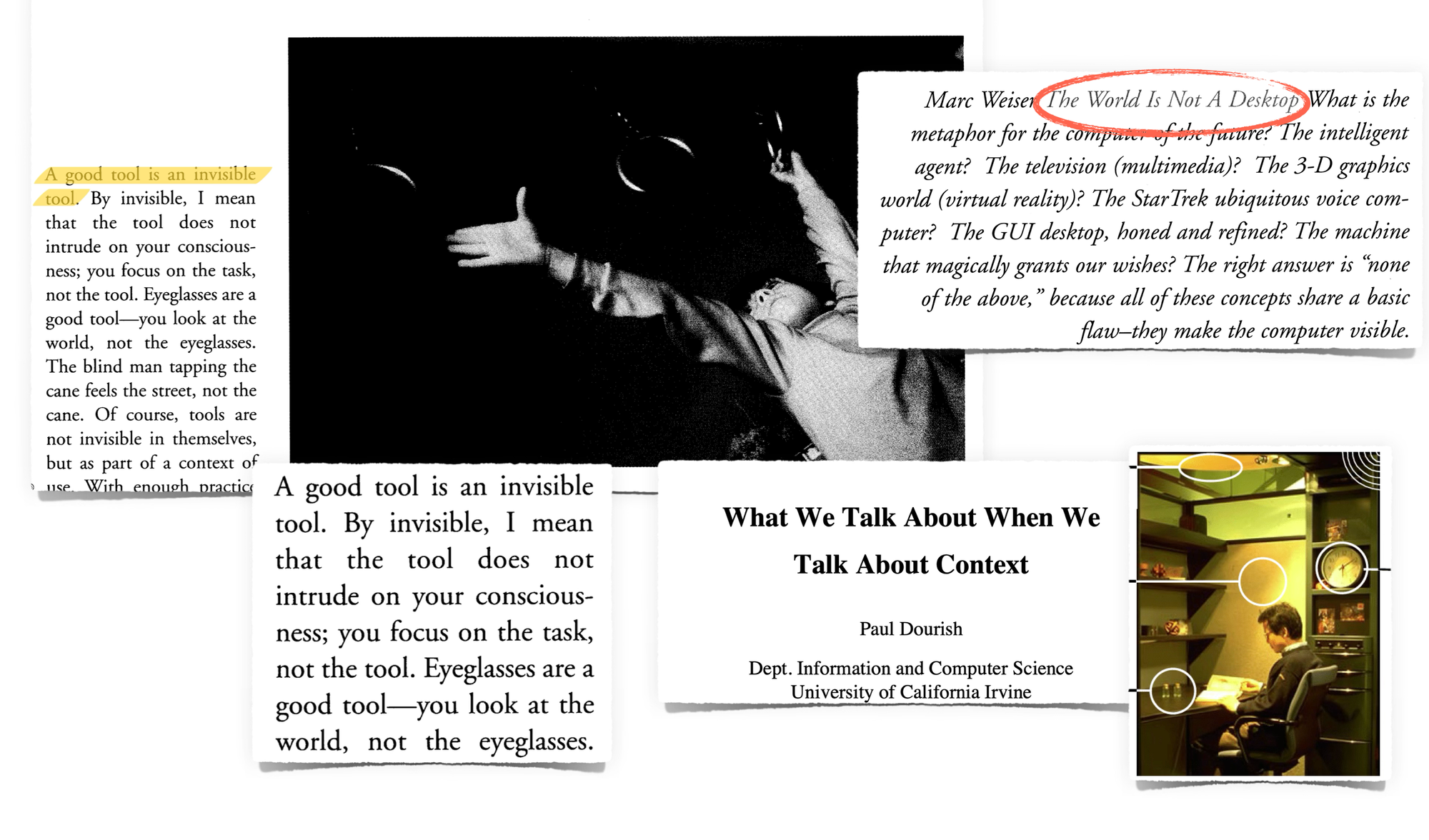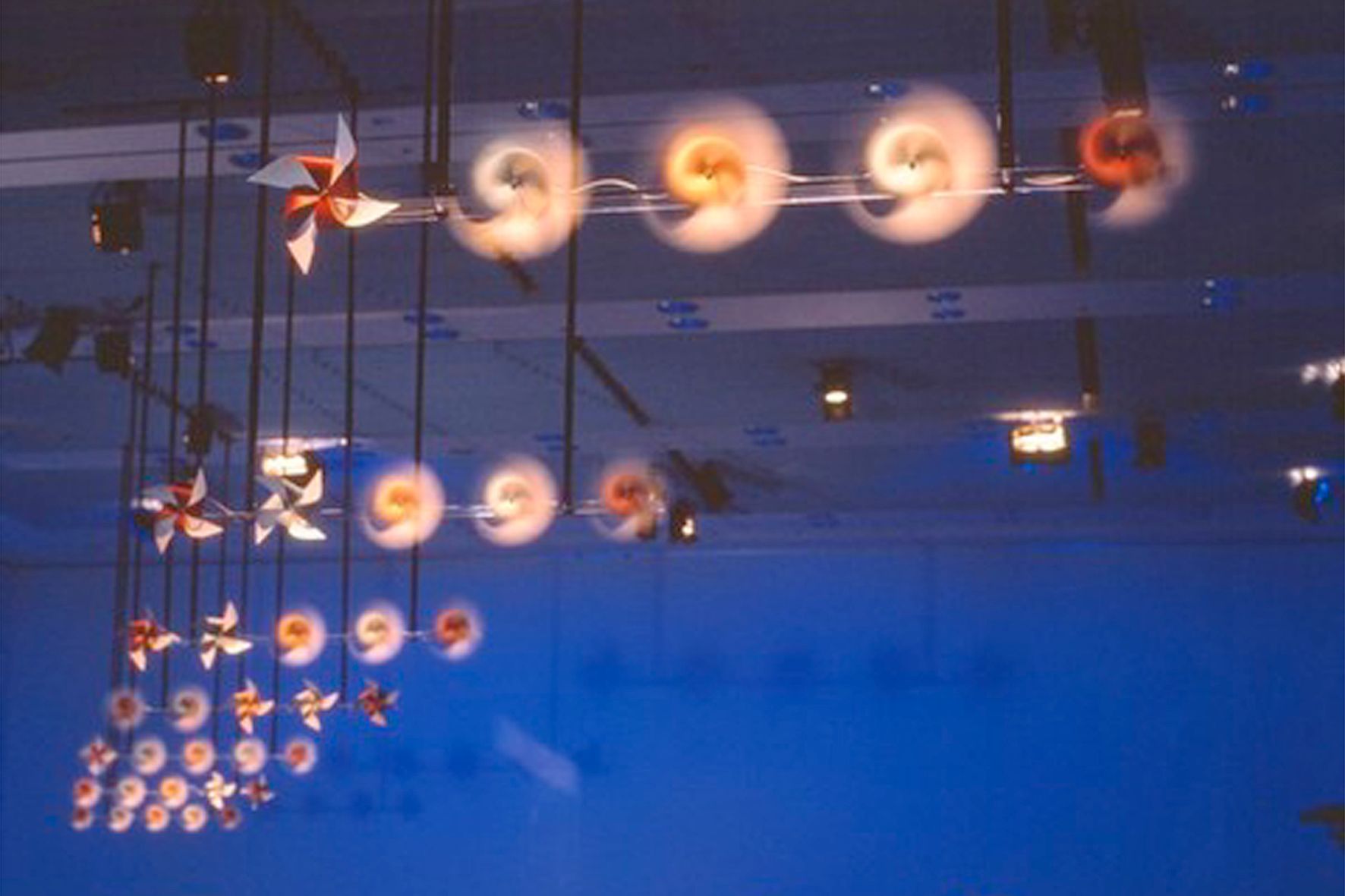Design readings: "The world is not a desktop" and such
A slice of the design research I'm motivated by; from papers by Mark Weiser (Xerox Park 1994) to Paul Dourish, Hiroshi Ishii, and more fun HCI papers. This week I talk about readings from Mark Weiser, Hiroshi Ishii, Brygg Ullmer, and Paul Dourish

I've been the reading a lot of design history, and design research recently. The documents that formed the basis of Human Computer interaction.
HCI has a few seminal papers, that almost every one loves to reference, cite. The usual suspects, Douglas Engelbart's Augmenting Human Intellect, Vannevar Bush's As we may think, Alan Kay's Dynabook, are oft cited examples. Worrydream (Bret Victor's blog) has an entire collection of other Alan Kay readings that are equally worthy of reading.
So here are some that I really enjoyed:
The world is not a Desktop - Mark Weiser
Mark Weiser highlights the fundamental problems with computing so cleverly. We struggle with the same paradigms and problems today. The paper is prescient enough to highlight how the same challenges could plague AR/VR and even agentic AI systems.
Weiser's solutions maybe vague but they're enough of a start to give a clear north star for computing.
Weiser's Computer for the 21st Century, and his work on Calm Technologies are equally worthy reads.

Tangible Bits - Hiroshi Ishii, Brygg Ullmer, et al.
This is where the idea of Tangible User Interfaces begins. Loved reading this paper and how it highlights the importance of spatiality and "atoms" in dealing with information overload.
Tangible UI is a relatively nascent field, and one that isn't often seen in day to day of objects. But it's one that is increasingly going to be popular, as artificial intelligence embodies more physical objects. What TuIs provide is a unique interaction between digital tech and real world objects.

Much of the work here, especially the ambientROOM project has informed my work recently.

The ambientROOM project is worth looking at, especially because of its explorations in ambient object interactions and how it transfers information into the background and foreground.
What we talk about when we talk about context - Paul Dourish

Dourish's work on context is perhaps the most relevant work for today. A big part about AI systems is their "contextual" understanding. But what exactly is context? and What does it mean to have a contextual understanding.
Dourish argues that context is ever-changing and always being "renegotiated"; and for a computer to have a complete contextual understanding of its user is impossible.
Dourish's solution of a negotiation to build a shared understanding of context is an important concept for the future of intelligent interfaces. As computers build an understanding of our environments, it's essential that they build a shared understanding of context. A shared understanding of context is not just essential for managing expectations, but also for creating a private and safe computing system.
Paul Dourish's critique of Mark Weiser's vision of ubiquitous computing is also worth reading.
These are just some of the papers that informed my work in creating the Call to Action framework. While these are primarily academic works, there's also been a lot of industry work that guided me too.
You can read the full thesis and see the demonstrations here:



